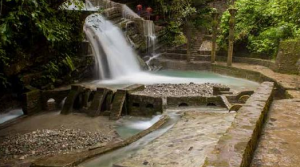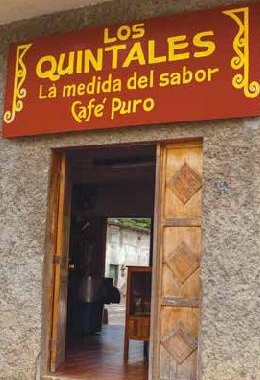San Luis Potosí - Xilitla, Surrealism in Nature

A Pueblo Mágico,this hilly village offers an atmosphere that enchants visitors at first sight and take them to explore the mysteries and stories that go as far back in time as the pre-Hispanic era.
 When we talk about surrealism in a Mexican context, Xilitla and Edward James come up in conversation immediately. The memory and legacy of James coexist with the popula- tion of the Huasteca.
When we talk about surrealism in a Mexican context, Xilitla and Edward James come up in conversation immediately. The memory and legacy of James coexist with the popula- tion of the Huasteca.
Xilitla is a town with strong traditions of native ancestral Nahua and Teenek, who live in harmony with both nature and modernity. Sitting to more than 2200 feet above sea level on a hilly portion of the Huasteca, this friendly com- munity enjoys a temperate climate and almost year long rainfall. The prodigious location and its atmosphere enchant the visitor at first sight. But to understand this you have to see it, feel it and walk the steep streets, visit its attractions, let yourself be embraced by the fog that at certain times covers the place.
A Pueblo Mágico (Magical Town) since December 2011, Xilitla joined Real de Catorce as the second village in San Luis Potosí to belong to that federal program. When you see when you see Xilitla, you realize easily why it got there: the magic of the place makes you wonder whether Edward James brought surrealism to Xilitla or rather he was inspired by the local topography, flora and environment to create his astonishing work.
The variegated palette, the construction and architectural disorder overlapped in a rare blend of a town that grows around a hill with circular streets and inconclusive alleys, seem to be the genre scene we see in many parts of Mexi- co mountain. But Xilitla has something extra, that “do not know why.”
 Due to its terrain, Xilitla’s endless concrete stairs are specifi- cally intended to connect to a home or a business. The stairs you see in the sculpture garden of Las Pozas of Edward James are all concrete, but incomplete. They climb leading you nowhere, without having an imaginable purpose.
Due to its terrain, Xilitla’s endless concrete stairs are specifi- cally intended to connect to a home or a business. The stairs you see in the sculpture garden of Las Pozas of Edward James are all concrete, but incomplete. They climb leading you nowhere, without having an imaginable purpose.
In the mornings and evenings, the smell of coffee fills the streets. The region’s main product, coffee plantations are a highlight among the thick vegetation. The organic coffee crops from San Luis Potosí are famous for their quality. While in Xilitla, enjoy a steaming cup of coffee or chocolate, they’ll give you courage to keep exploring.
So, first you stop by the church and convent of St. Augus- tine, the oldest Hispanic construction in Potosino territory, built by the Augustinian friars in 1557. Then known as San Augustín de la Gran Xilitla, its high walls were a defense against natives’ attacks. Xilitla’spre-Hispanic name was Taziore, which in the indigenous language means place of cozoles, a variety of river shrimp very abundant in the region.
And then you run into that rarity better known as the “cas- tle”of Edward James, nowadays an exclusive hotel with just a few rooms.
At the distance you’ll see the silhouette of an extraordinary and enigmatic peak known as La Silleta, the inspiration source to countless legends. Ask people about it, and you’ll find out. Xilitla’s magic will sound even more interesting, with another kind of magic.


